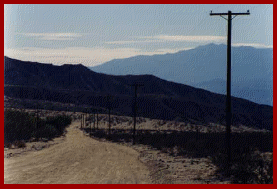| |||||||||||||||||||||||||||||
Welcome to the | |||||||||||||||||||||||||||||
 | |||||||||||||||||||||||||||||
 | |||||||||||||||||||||||||||||
The story goes that the original development of ‘Slow Scan’ telephone video transmission was as a direct result of research carried out for the NASA space programme in the 1960’s; it may well be true, but the one thing that slowscan was noted for was ... being oh so desperately slow! The simple idea was that a captured video image is turned into an audio signal which can then be pumped down a normal PSTN phone line to an appropriate receiver, located somewhere else in the world. It's a bit like a fax machine set up, although instead of transmitting a paper document, the tranmission is a video image (and it was much slower than a fax!!). In Black and White form it did work well, but it wasn’t until ‘Fastscan’ became a reality that the CCTV industry started to take the idea of telephone transmission far more seriously. Perhaps the single most important breakthrough in technical terms, was a technique known as Conditional Refreshment, which put simply, allowed transmitters to send the constantly changing bits of a picture more often, than the static components which barely changed at all. As a method for reducing the amount of raw data, it works extremely well, although in our modern ‘digital’ age, it’s a technique which is far more readily associated with compression techniques such as MPEG, M-JPEG, Wavelet, MPEG-4, WMV-9, H.264 etc. All these data manipulating codecs are intended to fulfil the same purpose, although they each function in slightly different ways, which is perhaps reason enough why there hasn’t yet been (and seems unlikely ever to be) a standardised image compression protocol that will work with all video processing and transmission equipment. There are a very limited number of dedicated telephone transmission systems on the market, which offer a range of functions from virtual real time transmission (as you would expect the picture quality will generally improve as the uprate 'frames per second' is reduced), along with a number of options for utilising the humble PC as a readily available means of transmission . The simple rule with any telephone based package, is the faster your link,the better the picture quality, and the quicker the individual pictures can be updated or 'refreshed'. | |||||||||||||||||||||||||||||
 | |||||||||||||||||||||||||||||
IMPORTANT: No material may be reproduced, copied or redistributed from this site, © doktorjon.co.uk 2004 - 2008 Homepage...:...Gateway...:...Technical Gateway....:....Quickfind Index....:....Equipment Directory | |||||||||||||||||||||||||||||

